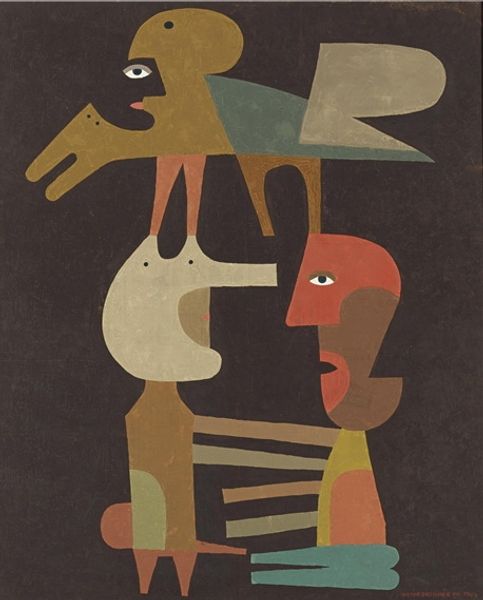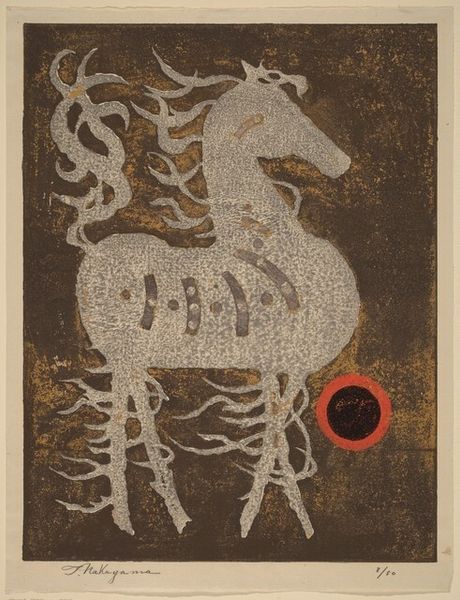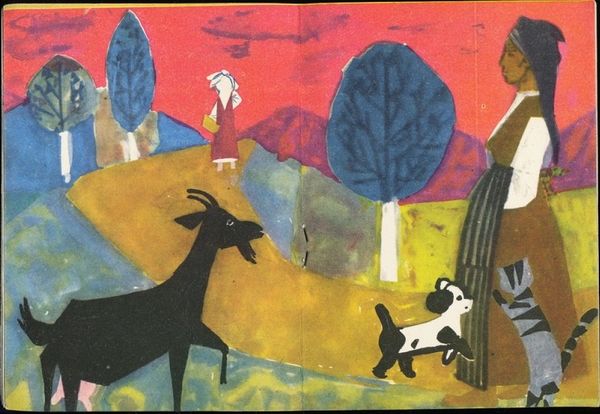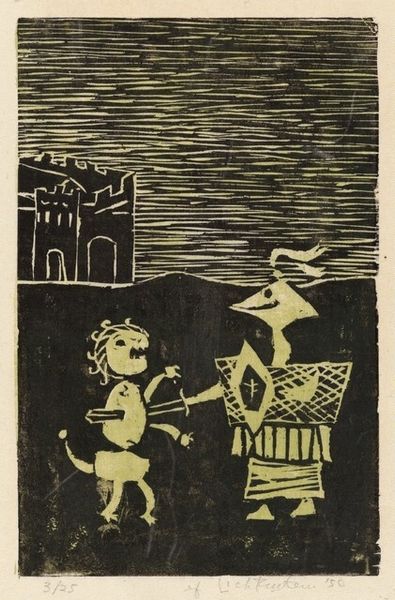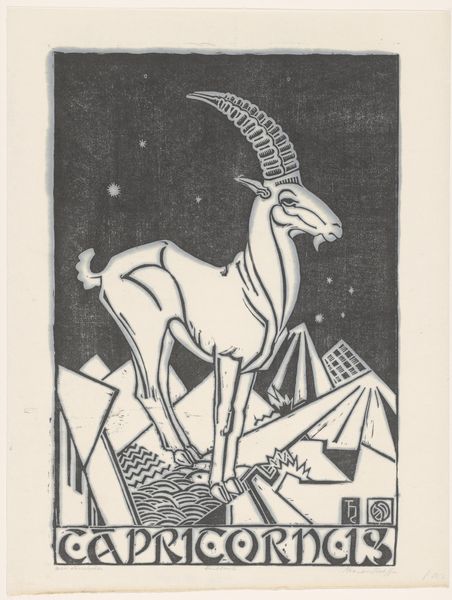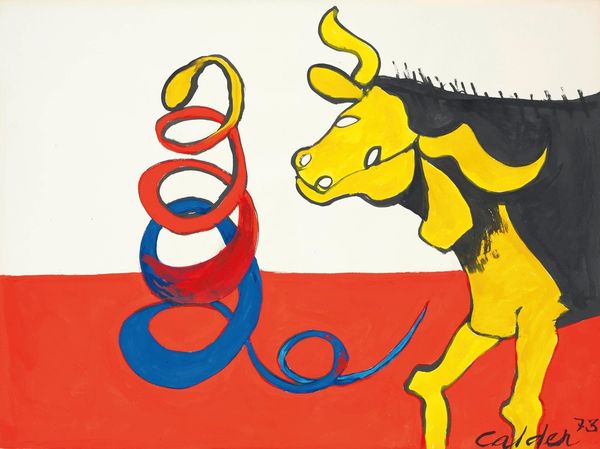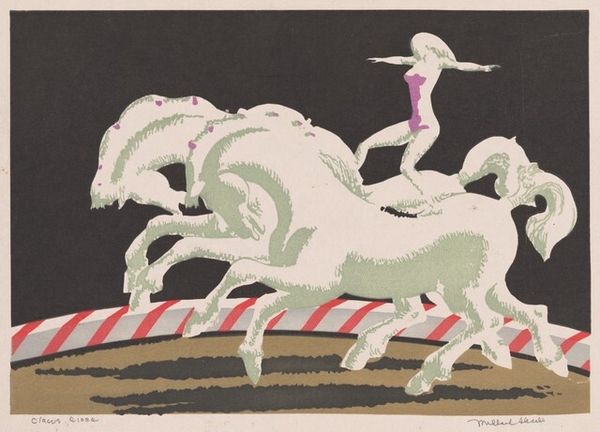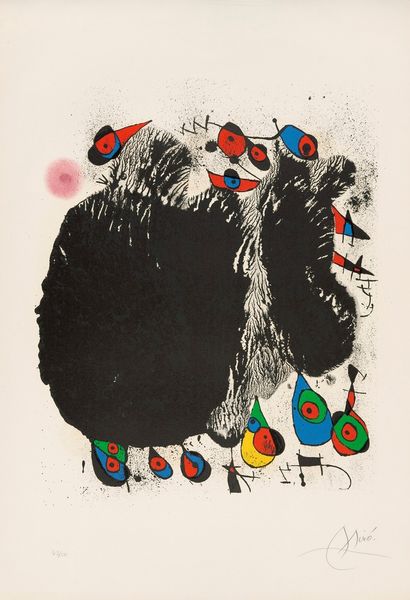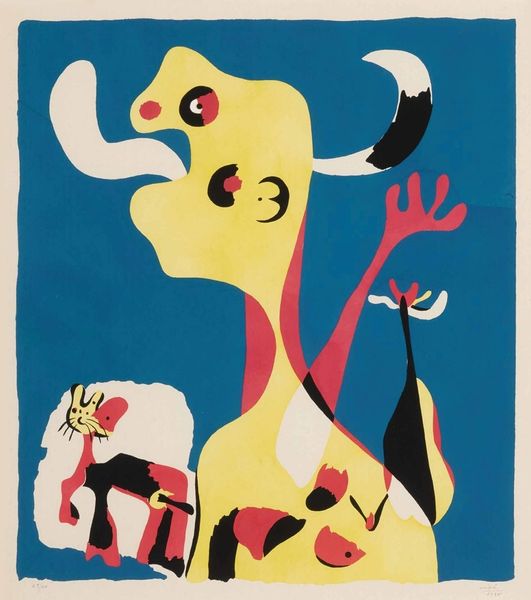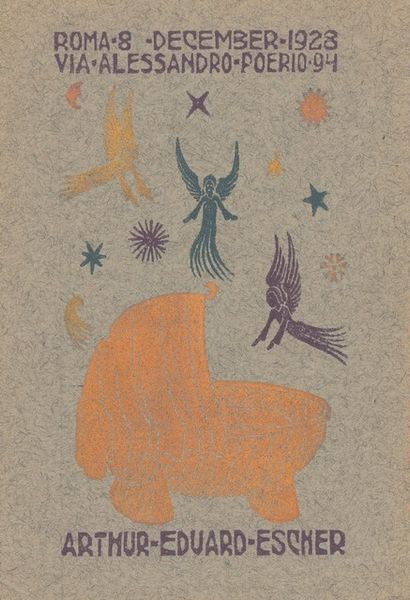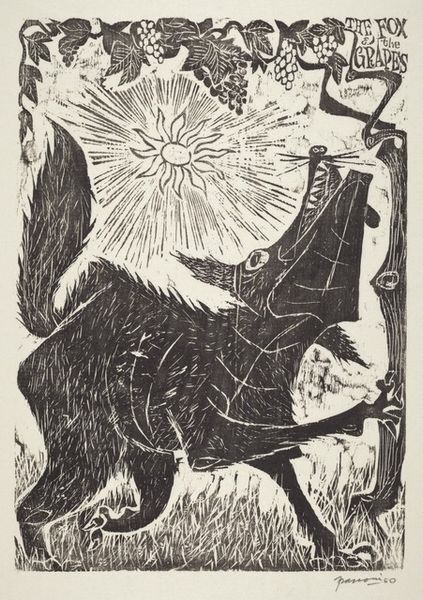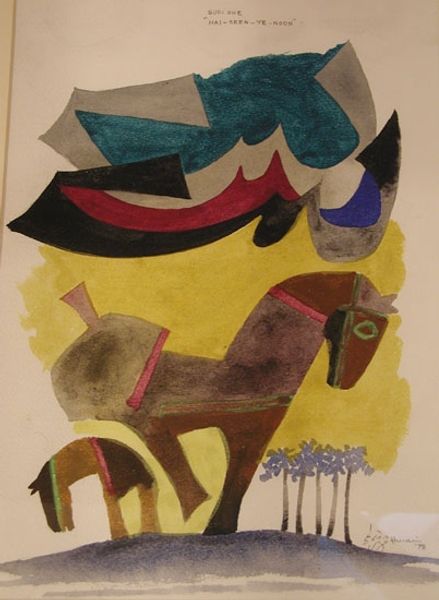
Copyright: National Gallery of Art: CC0 1.0
Editor: Here we have Tadashi Nakayama's "Running Horses, #2" from 1958, a vibrant woodcut print. The use of colour is really striking; a blue, black, and red horse beneath geometric shapes. It feels both modern and ancient at the same time. What historical or cultural significance do you see in this piece? Curator: Nakayama’s work definitely occupies an interesting space, negotiating tradition and modernity. The influence of *ukiyo-e*, the Japanese woodblock print tradition, is quite visible. Consider the flattening of space and the bold outlines. However, he abstracts forms and uses a distinctly modern colour palette. How do you think this tension would have been received in postwar Japan? Editor: I hadn't considered its reception in postwar Japan! Maybe it was seen as a rejection of tradition, or perhaps a celebration of it in a new light? The abstraction reminds me of European modernism, too. Curator: Precisely! Think about Japan’s complex relationship with the West during that period. There was a strong desire to both embrace and redefine its own cultural identity after the war. Nakayama's geometric abstraction is indeed evocative of European movements like Cubism, filtered through a Japanese sensibility. In fact, notice that despite the modern abstraction, he chose horses - which, throughout Japanese art history, can symbolize power, good fortune, and even war. What is Nakayama saying about Japanese cultural identity, using such traditional subject matter? Editor: So, the horses are traditional symbols viewed through a modern lens? Maybe he's acknowledging the past while pushing towards the future? It seems he's encouraging viewers to think about Japan's evolving role in the world. Curator: Exactly! By understanding the social and political landscape of postwar Japan and how that shapes cultural production, this colorful print gives us a glimpse into Japan's struggle to redefine its cultural position. Editor: That really helps me to understand Nakayama’s vision and layers of meaning embedded within it. Thank you!
Comments
No comments
Be the first to comment and join the conversation on the ultimate creative platform.
